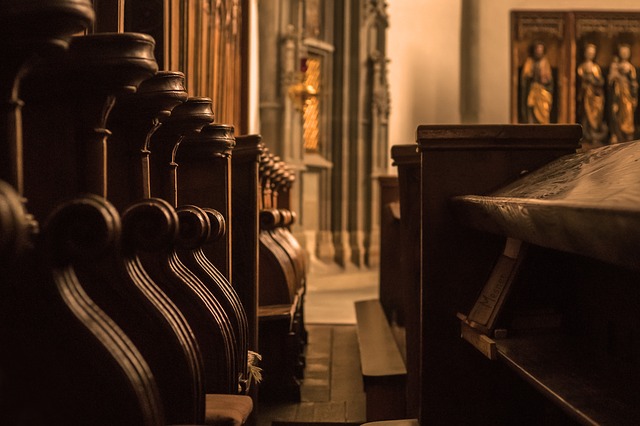There are at least 2 billion Christians worldwide, scattered in various parts of the globe today. The numbers continue to increase, which begs to question how it grew from a small gathering of 2,000 people or so to a religion that now influences the lives of many today.
Here are seven critical dates in history which cemented what Christianity is today:
1. 50 AD: The Council at Jerusalem
While the Pentecost is considered the birthday of the Church, the Council at Jerusalem - as seen in Acts 15 - is the main turning point for the Church's development. The Council was held due to the conflict of teachings regarding certain issues and the desire of the Pharisees to pressure Gentiles to follow their practices. Two of the most important figures in early Christian history - Paul and Barnabas - were in the discussions.
In the chapter, we read 'Some believers who belonged to the sect of the Pharisees stood up and said, 'It is necessary for them to be circumcised and ordered to keep the law of Moses.'
The response was crucial for the Church - in the words of James, 'God first looked favourably on the Gentiles.' This response highlighted the fact that the Church is no longer just for Jewish followers of Christ, but also for Gentile Christians. Without the decision done in the council and the council taking place, billions of Gentile Christians would not have been in the Church today.
2. May 20-June 19, 325: The Council of Nicea
The Council of Nicea was a vital event in deciding the orthodox Christian doctrine. The council was called due to political reasons by Emperor Constantine because of the rise of Arianism, a theology which preaches that Jesus is a creature and not a creator. Bishops and theologians met for this council and they have agreed that the Arianist teachings wrong and wrote the Nicene Creed as their response. The creed (amended 70 years later) codified what is now known as the Trinitarian doctrine that up till today is still being professed by the faithful worldwide.
3. July 16, 1054: The Great Schism
While there was already a divide in the Church in 451, the Great Schism of 1054 was the first major event that divided Christendom into two camps: Eastern Orthodox and Roman Catholicism. Both camps had been teaching two different theologies and practices for hundreds of years and there was even a power struggle. It was only in 1054 that the formal division between the two parties was done.
The Church remains divided almost 1,000 years later. Most Christians in the West are the inheritors of that western Christian tradition which formally dates from 1054. During the fourth Crusade, western Christian soldiers sacked Constantinople in 1204, which triggered further conflict between both parties. However, this conflict is now slowly dwindling due to renewed talks between the heads of the two parties.
4. October 31, 1517: The beginnings of the Reformation
FIve hundred years ago, in 1517, Martin Luther sparked the Reformation of the Western Christian faith and the rise of Protestantism. Although he was not the first one who questioned the teachings of the Roman Catholic Church, he was very articulate and forceful, writing his belief and pinning it in a church door.
Aside from Luther, others followed his example such as Jean Calvin in Geneva, John Knox in Scotland, Ulrich Zwingli in Zurich and Thomas Cranmer in England. Their positions began to reform the Church. While the presence of these theologies triggered the creation of Protestant Christians, both Catholics and Protestants are on good terms.
5. May 24, 1738: Evangelicalism Begins
If the Reformation had created Protestantism, Evangelicalism started in England. On May 24, 1738, John Wesley was sitting in a church in the City of London when he felt his heart 'strangely warmed'. This event started a revival in England, which was powered by what became known as Methodism. Alongside his hymn-writing brother Charles and his sometime sparring partner George Whitfield, Wesley became the pioneer of a revival which spread widely. He preached to vast crowds and inspired millions with his message. That message was carried across both sides of the Atlantic and led to the evangelical Church.
6. April 9, 1906: Azusa Street Revival
In 1906, a movement began in California, which would shape the face of the future of Christianity. The Azusa Street revival is considered to be the start of what we now know as the Pentecostal movement. Speaking in tongues, miraculous healings and other 'signs and wonders' were part of the movement since it started. Pentecostalism has become a major player in world Christianity with countries as diverse as Brazil, South Korea and Nigeria, even in the United States, emerging as powerhouses of Pentecostal Christianity. According to estimates, there are hundreds of millions of Pentecostal Christians worldwide today.
7. 21st century China
Though the first evidence of Christianity in China goes back as far as the 6th century, it is in the present day the world is now seeing China as a key spot for Christianity. According to estimates, Christianity in China started with a few numbers 100 years ago, but now it has jumped to 67 million and still growing. As China is likely to become the world's strongest economic power in the 21st century, Christianity in the country may also be influenced as months pass by. Currently, the government continues to act on the growth of the faith in the country and partially represses it.








